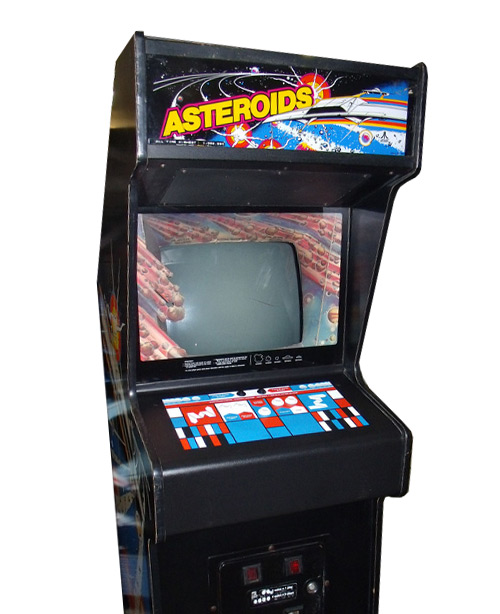


The mixed critical reception of the Cosmos and its $100 price tag gets it shelved that same year. Like the original Odyssey home video game by Magnavox, the cartridges for Cosmos contain no ROM chips they merely have jumpers that adjust the hardware inside the console. The initial lineup of eight games for the system is to include Superman, Football, Roadrunner, Outlaw, Sea Battle, Space Invaders and, in a nice bit of symmetry, Asteroids. The much-hyped holographic content is limited to flat 3D backgrounds placed underneath a simple LED display, although the two white-light-reflection holograms included with each game cartridge can be displayed alternately by the unit changing the light source. Dubbed Holoptics, this 3D gaming system is little more than a pipe dream by Atari and is later prototyped as a programmable, tabletop game system shown to the public at the 1981 Winter CES in Las Vegas, as well as the annual Toy Fair in NYC. With the working title of Planet Grab and rendered in 3D graphics, the game would involve players piloting around a solar system, claiming planets by touching them. In 1978, 27-year-old Atari engineering Vice President Lyle Rains, having joined Atari back in 1973, is developing a game concept for Cosmos. the company’s planned holographic gaming project headed by Pong engineer Al Alcorn. Reeling from the fact that they hadn’t been responsible for quarter gobbler Space Invaders, Atari desperately scrambles for the next insanely great arcade game.


 0 kommentar(er)
0 kommentar(er)
